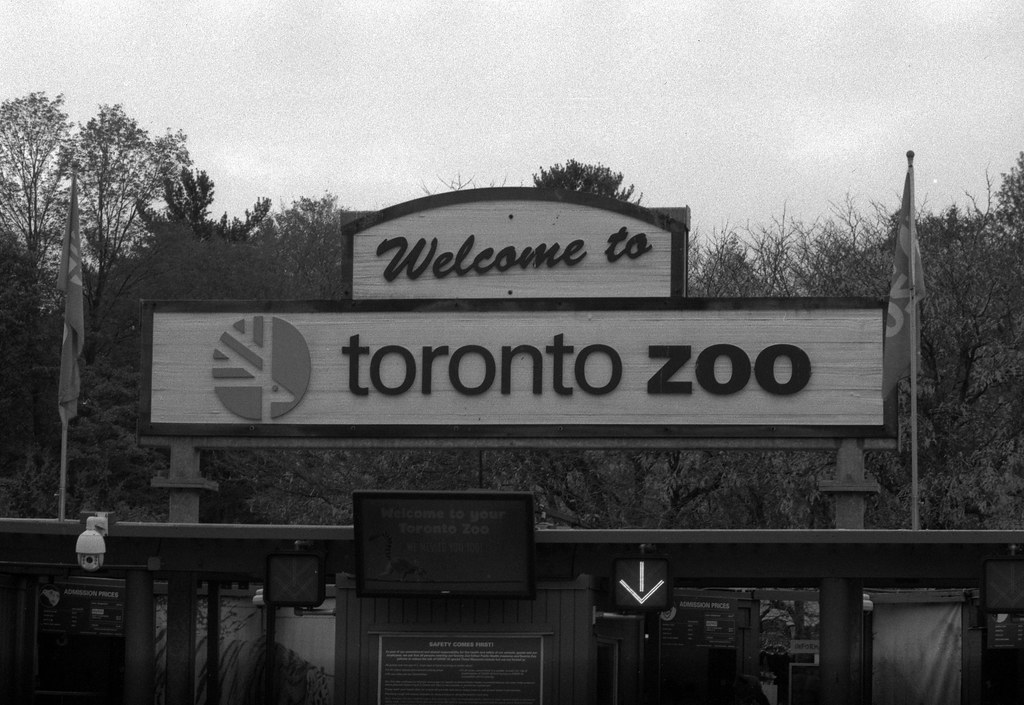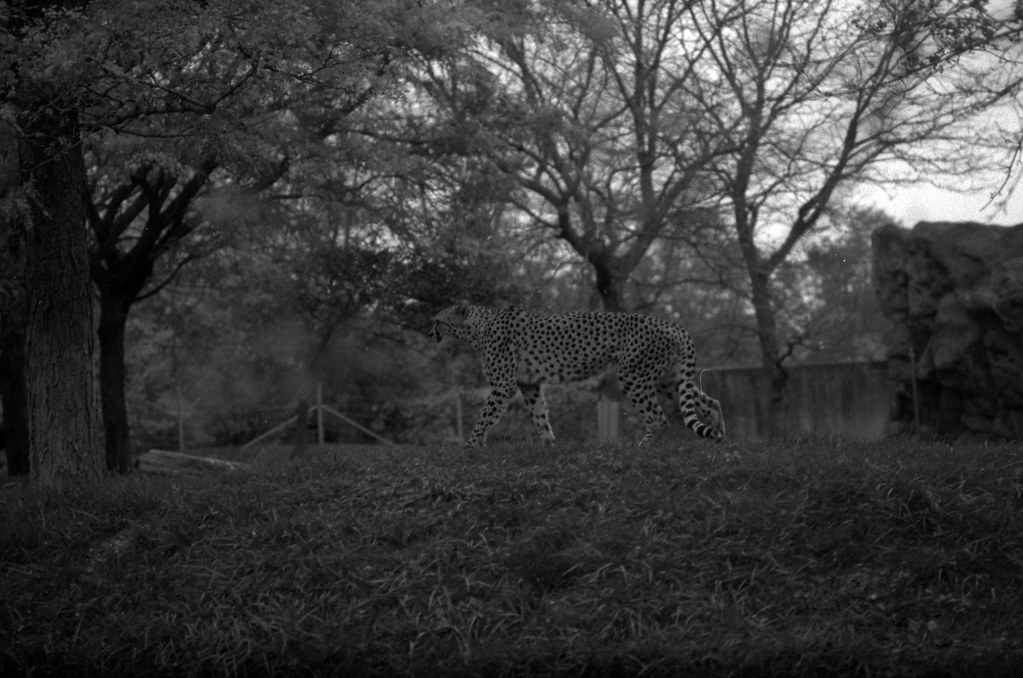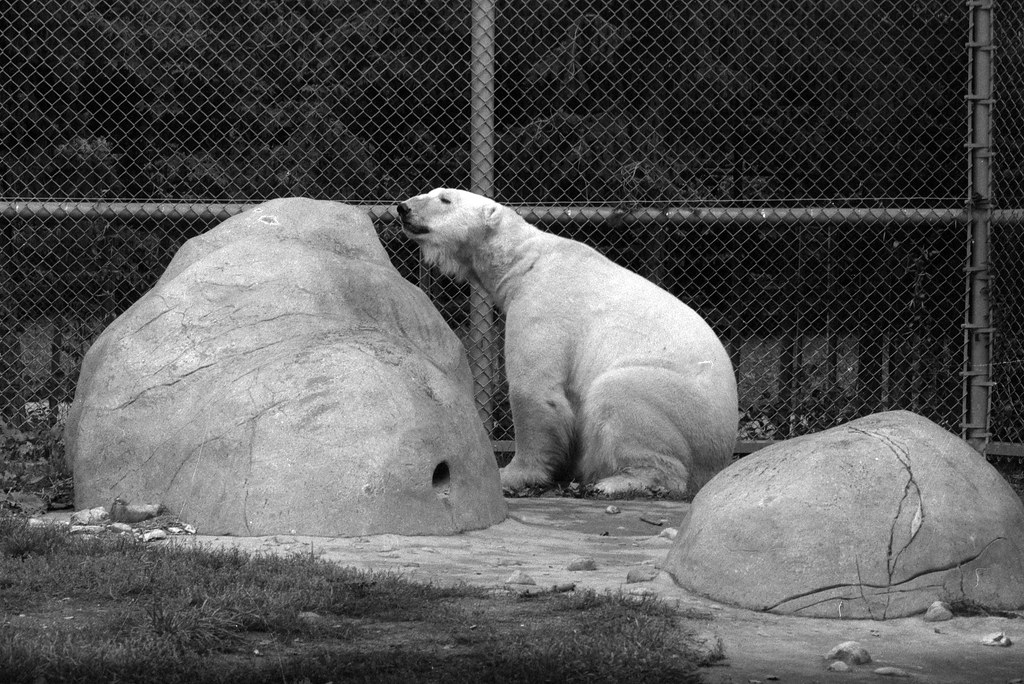I kept typing the title “If I left the Zoom”, which is also appropriate these days, but there’s nothing to do with Zoom this week. Instead, the title comes from the third studio album from one of my favourite bands, Jars of Clay. But like zoom, this week also has nothing to do with Jars of Clay. Instead, we’re heading to the Toronto Zoo. The Toronto Zoo is a spot I haven’t been to since my last 52-Roll project on an early date with my (then future) wife, Heather.

The first Zoo in the city of Toronto was the Riverdale Zoo that opened in 1873. The Riverdale Zoo, located where the Riverdale Farm is today, was your typical Zoo for the Victorian era. Animals were held in cages and were an attraction to the public, with little attention paid towards preserving the world’s biodiversity in the age of Empire. What surprised me the most was that the Riverdale Zoo remained open for an entire century. In 1966, concerned locals formed the Metro Toronto Zoological Society to build a modern Zoo for the city. Several sites around the town were surveyed by architect Raymond Moriyama who in 1967 selected the Glen Rouge site in Scarborough. The construction of a new zoo proved a massive undertaking with several different firms and contractors that needed coordination. The master plan in 1969 laid out a world-class zoo, and a budget of 22 million was granted, with an additional 6 million raised through fundraising activities in local schools. Construction started in 1970, and by 1973 enough had been done that the animals at Riverside were relocated to the new Toronto Zoo. The grand opening took place in August 1974 with great fanfare. The Zoo has changed a lot since its initial opening. It has become a world-renowned facility that participates in global efforts to promote biodiversity and keep endangered species viable and around. Today the Toronto Zoo occupies an area of 710 acres, houses close to six thousand animals with 495 species represented and has a staff of approximately 1,000.


There is a lot to see at the Toronto Zoo, so narrowing my options down to seven images was a difficult one; I did make a point to include only photos of animals for the bulk of the post. Only the featured image is of the sign above the main entrance to establish the location. From there, it was a matter of choosing which animals to include; thankfully, with the 105mm lens and having many animals relatively close to their windows under shelter, I managed to get some excellent shots. The real show-stealer is Milia, an Amur Tiger Cub that was born at the Zoo back in May and is the only survivor of a litter of three cubs. I mean, there’s a reason I included Milia twice. They’re so cute! Then the usual grouping of other animals caught my attention. Thankfully in many cases, they were pretty stationery making it easier to focus on them manually.


My original plan for the day was to bring the Nikkor 200mm f/4 lens, giving me a long reach for animals in significant habitats. But also giving note to the poor weather forecasted, I needed to compensate for the f/4 maximum aperture. I planned to under-expose the film by one-stop to ASA-400 then pushing in development. The developer I planned to use was Ilford Ilfotec HC at a 1+31 dilution. Of course, I went back and rethought my choice as the weather conditions improved and easy to focus on my subjects quickly. I ended up switching to the Nikkor 105mm f/2.5 sure far shorter but allowed for faster focusing and then shooting the film at box speed at ASA-200. I stuck with Ilfotec HC as my developer with the 1+63 dilution as it remains a favourite of mine for developing Fomapan 200. And I think I made the right choice, even though I was starting to lose most of my light by the early afternoon as the clouds gathered again.


After planning to use my Nikkor 200mm f/4 this week, I decided that for the next roll, I would give it a go and explore some local architectural details that I can reach with such a long lens.